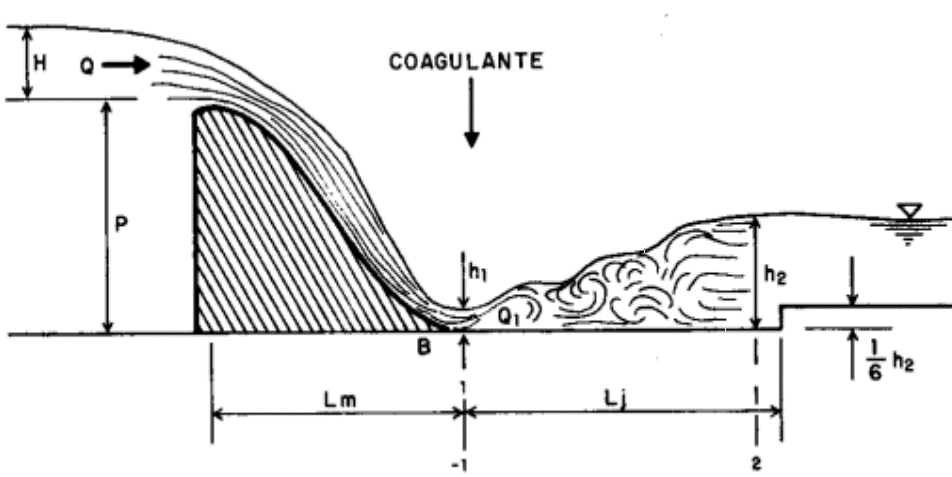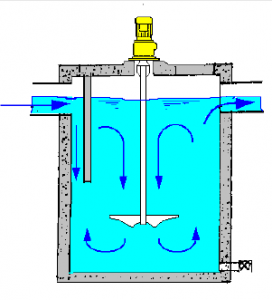Coagulation:
To eliminate the turbidity of the water and the reduction of other parameters such as the apparent color caused by suspended particles that due to their size and weight are not capable of sedimentation, the application of chemical products (coagulants) is required in order to electrically destabilize the particles and allow them to begin to stick together to form a larger one (floc) that can settle.
The mixture of the coagulant with the water must be carried out by means of a rapid mixing structure in which through the turbulence formed by hydraulic or mechanical means, the coagulant is dispersed intimately and quickly.

Hydraulic fast mixers uniformly mix the coagulant by means of a change in the section of the channel that conveys the flow, causing the formation of vortices in the water that allow the coagulant to mix with the water. Hydraulic risers, Parshall troughs, Venturi tubes, perforated tube dispersers and baffled tanks are generally used.

Mechanical Flash mixers basically consist of propellers, blades or turbines that are coupled to a rotation axis, so that, driven by any type of energy, usually electrical, induce in water suitable agitation to generate the mixture of coagulant evenly in the water flow.
Bibliography
Purificación del agua. 2006. Escuela Colombiana de Ingeniería. | https://books.google.com.ec/books?id=ZGnIYgEACAAJ
Referencies
LA COAGULACION - FLOCULACION EN EL PROCESO DE TRATAMIENTO | http://www.elaguapotable.com/coagulacion-floculacion.htm